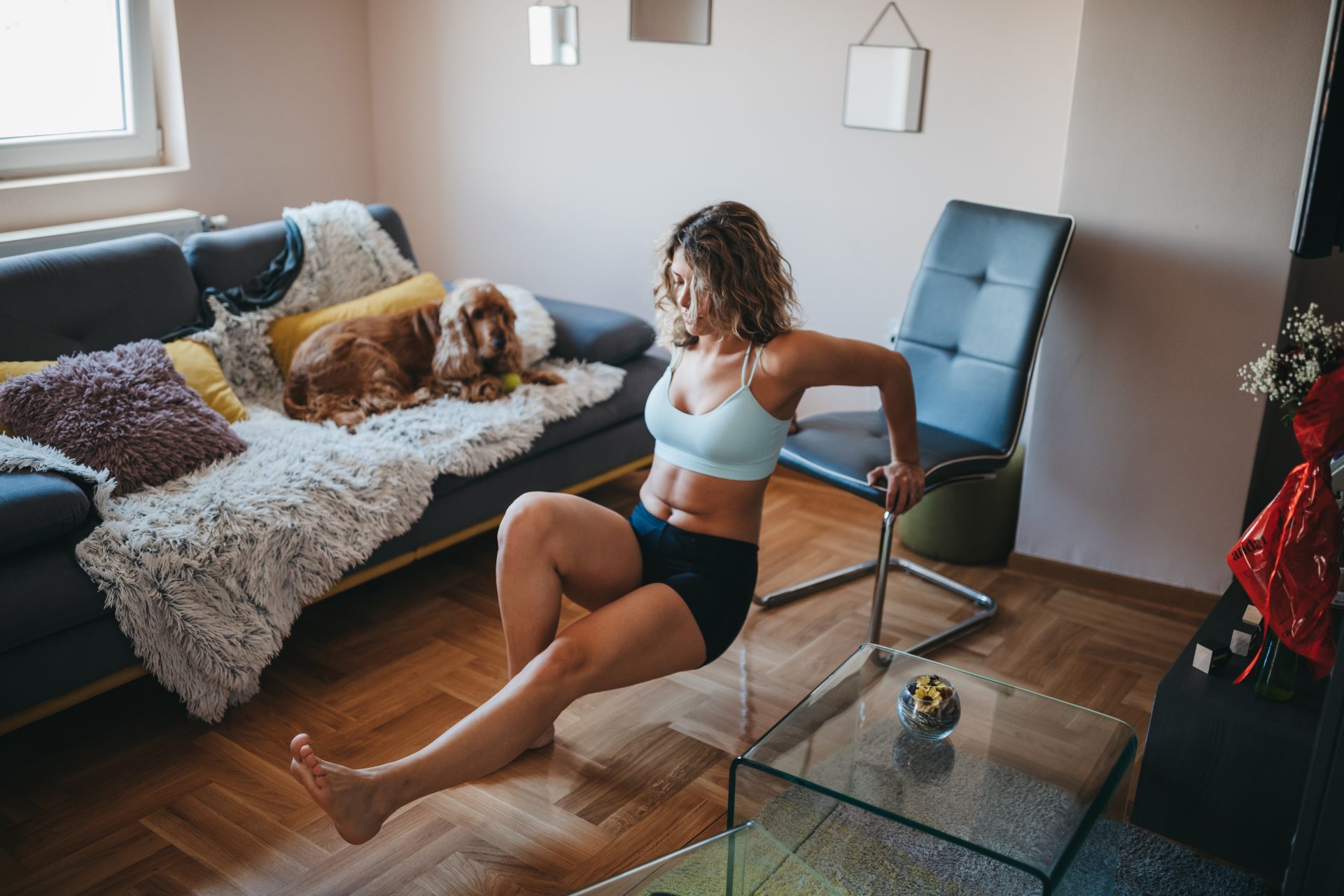Barre is the workout trend that boomed during lockdown. But why does everyone love it so much?
Every single aspect of our worlds were turned upside down this year. No matter where you worked, be it an office or a hospital, your shifts looked very different than they did in 2019. No matter who you lived with, be it distant housemates or your nuclear family, they became your Friday evening TV companion, morning coffee maker and probably a shoulder to cry on. And the places we usually head to relax, be it a bar or a friend’s house, were suddenly out of bounds.
Our entire exercise routines also changed, which may not sound like a big deal given the circumstances, but for those who use exercise as a stress reliever or mental health booster, it did have a huge impact. With gyms, yoga studios, spinning classes and swimming pools closed, we had to adapt to home workouts or running. But from experimenting with different workouts, one seemed to reign supreme: barre.
You may also like
Lockdown exercise rules: why skipping your workout really is OK, according to an expert
The workout is focused on ballet and pilates style moves, working slowly through exercises, pulsing and holding isometric positions for longer periods of time. And not only were Instagram Lives blown up with barre style pulsing, but workout app FIIT launched a new barre section during England’s second lockdown, and Google search for barre workouts skyrocketed.
One person who found herself falling for the workout was Stylist’s deputy digital editor Jazmin Kopotsha. “Truth be told, I’d very quickly settled into my fate as someone who wouldn’t be joining in with the whole ‘working out from home’ thing,” she says. “I’ve long been what I like to call a ‘reluctant exerciser’. Translation: I hate feeling like I’m over-exerting myself and the only way you’ll get me to ‘workout’ is by accident.
“When I started moaning about feeling really stiff and stagnant during lockdown, my friends, family and boyfriend all kindly (read: exasperatedly) advised I did some sort of movement at home, and that a barre class would probably be the most familiar for my body, having taken hours of dance classes per week as a child. I did it, I didn’t hate it but rather was annoyed that I wasn’t able to keep up with pilés and arabesques as well as I thought I could, so that frustrated competition with myself is what kept me at it.”
You may also like
Home workouts: 3 ways to use household items as weights
Of course, Barre is no new trend, but lockdown has made the workout more accessible than ever. Traditionally, classes have been reserved for fancy studios with expensive memberships, but the free Instagram workouts and cheaper-than-in-person subscriptions mean that barre is now available to most people. And while you do traditionally need a bar for barre, it’s easier to adapt for home workouts than, say, weight lifting, which requires barbells and dumbbells that sold out everywhere.
“You don’t necessarily need anything except bodyweight for barre, but everyone at home has a chair, some sort of raised surface like a table or kitchen countertop, a window sill or, at the very least, a wall that they can lean on,” says Emma Obayuvana, fitness trainer and barre teacher from the Strong Women Collective.

Plus, barre can be done by those who struggle with the other forms of training we had access to during lockdown like 5Ks and HIIT – and not just because, like Jaz says, the exertion feels like an “accident”.
“There’s rarely any impact work in barre, unless it’s a hybrid class such as power barre,” says Emma. “If you have any joint issues or you don’t want to put too much pressure through your joints, and if you need a quiet workout because of your neighbours, barre is great.”
However, just because you won’t be jumping around, it doesn’t mean that you won’t be working hard. “Even though it is a low impact, barre is incredibly challenging,” agrees Emma. Barre works on muscular endurance, meaning the amount of time that the muscles can withstand being under tension.
“You’re doing so many reps of the of the movements and holding and pulsing for a really long time that it becomes really taxing on the muscles,” Emma says. It’s important to note that you won’t be building muscle in the same way you would with weight training, it can still build strength. A 2007 study from the Journal of Applied Research found that just seven minutes of isometric exercise a day improved strength by 20%.
You may also like
At home workout: how to strength train with nothing but a chair
“In order to hold the positions you need to engage every single muscle, from your core to your arms to your glutes,” adds Emma. And that also has a big impact on your posture, as “you’re being concise with the movements – you can’t have rounded shoulders, arching backs or locked hips,” which can translate out of the practice to your desk job.
Ultimately though, barre can just be fun. Lots of people simply don’t enjoy jumping or weight lifting, while others have found it a suitable replacement to help them feel the muscles burning without access to equipment. “You move with the music, changing and progressing positions every time the music changes. That feels good, anytime you move to a beat just feels innately amazing,” says Emma.
Whether we’re allowed back in gyms or classes in 2021 is yet to be discovered, but knowing there’s always barre makes that slightly less daunting.
Follow @StrongWomenUK on Instagram for the latest workouts, delicious recipes and motivation from your favourite fitness experts.
Images: Getty
Source: Read Full Article
